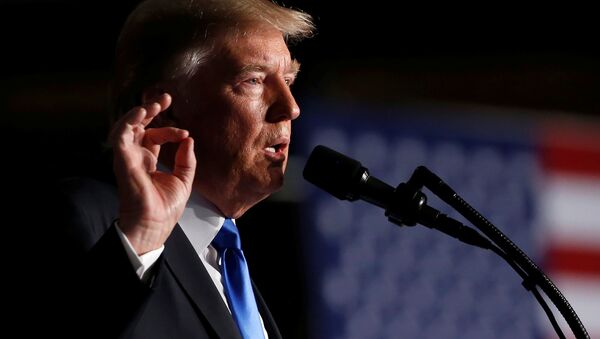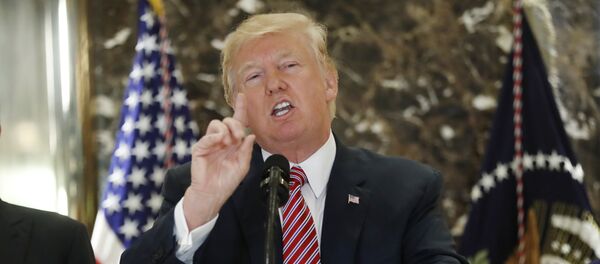WASHINGTON (Sputnik), Olesya Manokhina — While renegotiating the North American Free Trade Agreement between Canada, Mexico and the United States, the intentions of the Trump's administration are still unclear, according to former deputy director of the US Treasury Russell Green.
"Part of the first round really was understanding what are going to be the plans of the United States, at least in general terms," Green, who is now an economic fellow at Rice University’s Baker Institute, said in an interview on Wednesday. "But I think that we have not seen full set of cards yet."
Following a first round of talks in Washington, DC, Trump said during a rally in Phoenix, Arizona, that he could still pull out of the deal at some point.
By threatening to terminate the NAFTA deal, Trump was mainly communicating with his supporters and relying on a theme that worked for him during the 2016 election campaign, Green noted.
He added that Trump likes to keep the threat of leaving the agreement as part of his cabinet's negotiation strategy. However, it would not be easy for the administration to withdraw from the deal, which falls under the Commerce Clause, without the approval of the Congress, Green underlined.
"It would be politically extremely difficult for Trump to unilaterally cancel the NAFTA treaty, because so very few people in Congress support such an action," Green told Sputnik.
"Probably a good amount of the second round is still laying out some of the specifics, putting the meat on the bones of the broader proposals that worked out in the first round," Green said.
He explained that these kind of talks usually move slowly, although all parties are trying to conclude them sooner rather than later due to the demands of their political calendars. For example, Mexico wants the NAFTA negotiations to conclude before their presidential elections in 2018 while the Trump administration aims to wrap up the talks quickly to deliver on campaign promises.
Green stressed that all signatories realize the importance of modernizing the treaty so that the harmonization of standards can be achieved and border-crossing procedures can be improved.
In a trilateral statement released on Monday, the parties announced the discussions would "continue at this rapid pace, moving to Canada in late September and returning to the United States in October." The United States Trade Representative said additional rounds are being planned for the remainder of 2017.
All three countries said in the statement that their representatives are working with many different stakeholders, including industry associations, labor groups and elected official in the effort to update the NAFTA agreement to 21st century standards.


